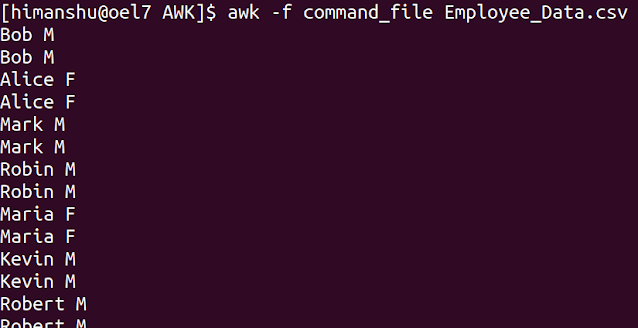LINUX AWK Tutorial Series | Chapter 7
Hello and welcome to AWK tutorial series, Hope till now you would have found the series interesting.
In this chapter, I am going to discuss loops in awk.
Looping
Looping helps to do a particular set of actions repeatedly until a certain condition is met.
Types of Loop in AWK
- while
- do .. while
- for
Syntax
While Loop: until the condition is true the body of the while will be executed.
while (condition)
{
body
}
Do While Loop: Do until the condition is not met. So this means the code body will always be executed once every time.
do
{
body
}
while (condition)
For Loop: Condition and variable initialization is done at the time of the start of the loop.
for (init;condition;increment)
{
body
}
Remember that the loop will be executed on all records one by one.
Some important looping constructs are
- break
- continue
- exit
Example 1:
From the employee data file, I want to print only 2 fields for each line twice every time. I can use while loop in this scenario.
I am using a script file. i++ is used to increment the value of i with one.
Example 2:
Now same first example if I need to do using do-while
[himanshu@oel7 AWK]$ cat command_file
BEGIN{FS=","}
{
i=1
do
{
print $1,$2
i++
}
while(i < 3)
}
Try at home: Now in both the above examples try to change the value of i=3 rather than i=1 and then run both with a while and do-while loop. Observe whats the change. Any doubts, please ask in the comment sections.
Example 3:
Now the same examples if I need to do using for loop.
Tips:
let say now in my file I have some comment lines and I want to skip them. and print other lines.
Example below, I don't want to print lines which start with "#"
[himanshu@oel7 AWK]$ awk -F "," '{print}' Employee_Data.csv
#This is employee data
Bob,M,Human Resources,30000
Alice,F,Human Resources,45000
Mark,M,Human Resources,30000
Robin,M,Human Resources,20000
Maria,F,Human Resources,30000
Kevin,M,Human Resources,60000
Robert,M,Human Resources,420000
#End of employee data file
^#--> this means records starting with #.
{next} --> Skip that record
More chapters to continue





Post a Comment
Post a Comment